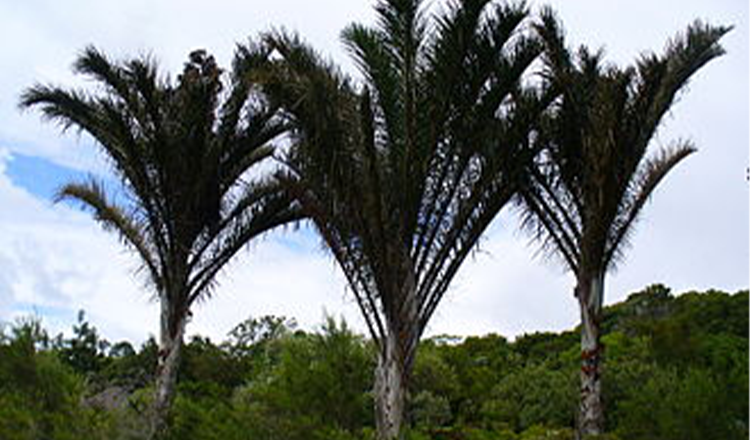Raffia palm

Raffia palms (Raphia) are a genus of about twenty species of palms native to tropical regions of Africa, and especially Madagascar, with one species (R. taedigera) also occurring in Central and South America.[1] R. taedigera is the source of raffia fibers, which are the veins of the leaves, and this species produces a fruit called “brazilia pods”, “uxi nuts” or “uxi pods”.[2]
They grow up to 16 m (52.5 ft) tall and are remarkable for their compound pinnate leaves, the longest in the plant kingdom; leaves of R. regalis up to 25 m (82.38 ft) long[3] and 3 m (9.84 ft) wide are known. The plants are monocarpic, meaning that they flower once and then die after the seeds are mature. Some species have individual stems which die after fruiting, but have a root system which remains alive and sends up new stems which fruit.
Raffia fibre is widely used throughout the world. It is used in twine, rope, baskets, placemats, hats, shoes, and textiles.
The fiber is produced from the membrane on the underside of each individual frond leaf. The membrane is taken off to create a long thin fiber which can be dyed and woven as a textile into products ranging from hats to shoes to decorative mats.
Plain raffia fibers are exported and used as garden ties or as a “natural” string in many countries. Especially when one wishes to graft trees, raffia is used to hold plant parts together as a more “natural” rope.[citation needed]
Raffia fibers have many uses, especially in the area of textiles and in construction. In their local environments, they are used for ropes, sticks and supporting beams, and various roof coverings are made out of its fibrous branches and leaves. A strand of raffia has a maximum length of about 1.5 m and an irregular width. When presented on spool or hank with a length of more than one meter and a half and regular width is not really raffia, it can be synthetic raffia, produced from a plastic material (polypropylene), or artificial, just like viscose (derived from wood, therefore basic cellulose cellulosic even if chemically treated). The first company in the world to design and build plants for the production of polypropylene raffia was the Covema of Milan founded by the brothers Dino Terragni and Marco Terragni. Covema collaborated with the Swiss company Sulzer, manufacturer of flat weaving looms for natural fibers, to adapt their looms to process polypropylene raffia woven products. Polypropylene raffia fabrics are still used to make carpet backing, protective sheets, rice bags, potatoes, citrus fruit, etc. Covema also developed coating lines to cover the raffia fabric with a thin film of polyethylene in order to make the fabric waterproof.[4]
